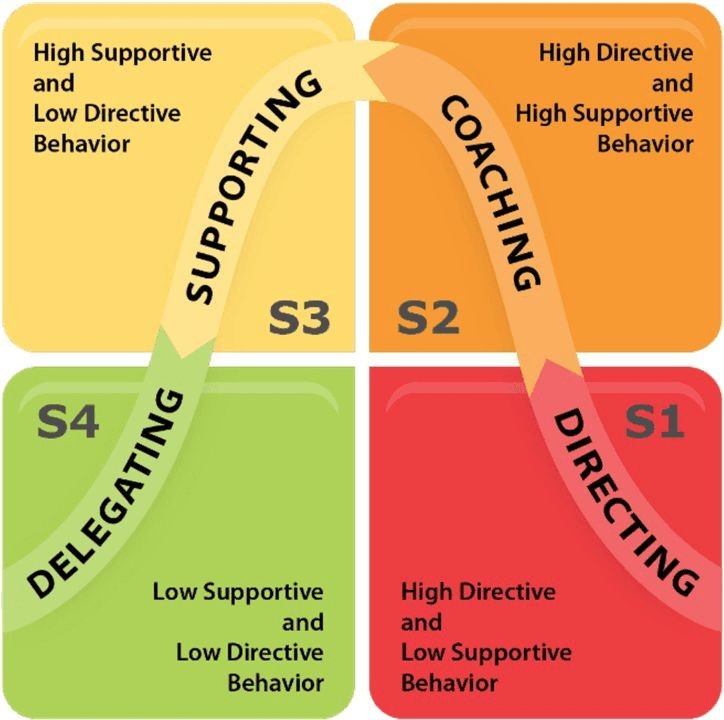Lamont Harris & Juan Rodriguez
Principles ET Leadership Summer II 2020
Situational Approach
The situational approach to leadership is based on the theory that each varied situation requires a varied kind of leadership. In 1969, Hersey and Blachard first developed this approach, building upon Reddin’s management style theory formulated in 1967. Since, the approach has been modified and fine-tuned several times over and has primarily been used in organization leadership training and development. The situational approach focused on the text (SLII) following premises: leadership is both directive and supportive, with each being pertinent to a set situation. Furthermore, when using this model, a leader must assess their followers and determine how proficient and enact the follower is to execute the task by:
Directive behaviors are typically one-way communication and are outlined as:
-
Defining roles
-
Help group members accomplish goals
-
Establish goals and methods
-
Showing how the goals are to be achieved
-
Setting timelines
Supportive behaviors include two-way communication and are outlined as:
-
Praising
-
Show social and emotional supports
-
Asking for input
-
Sharing information about yourself
-
Solving problems
-
Listening
Directive and supportive behaviors are further classified in the following the four distinct categories:
Style 3 (Supporting): the leader does not focus exclusively on goals but uses supportive behaviors that bring out followers’ skills around the goal to be accomplished. | Style 2 (Coaching): the leader focuses communication on both achieving goals and meeting followers’ socioemotional needs.
|
Style 4 (Delegating): the leader offers less goal input and social support, facilitating followers’ confidence and motivation in reference to the goal. | Style 1 (Directing): the leader focuses communication on goal achievement, and spends a smaller amount of time using supportive behaviors. |
SLII also describes development levels, which is how well a follower has learned the skills to complete a specific task and whether a person has gained a positive attitude concerning the goal. On specific goals followers can be classified as:
Development Level 1: are new to a goal and do not know exactly how to do it, but they are excited about the challenge of it. | Development Level 2: have started to learn a job, but they also have lost some of their initial motivation about the job. |
Development Level 3: have moderate to high competence but may have variable commitment. They have essentially developed the skills for the job, but they are uncertain as to whether they can accomplish the goal by themselves. | Development Level 4: are the highest in development, having both a high degree of competence and a high degree of commitment to getting the job done. |
Strengths | Challenges |
History of usefulness in corporate training | Limited research to validate assumptions |
Practical and prescriptive application | Lack of reciprocation to confirm premises |
Emphasis on leadership flexibility | Concerns of ambiguous concepts in model |




